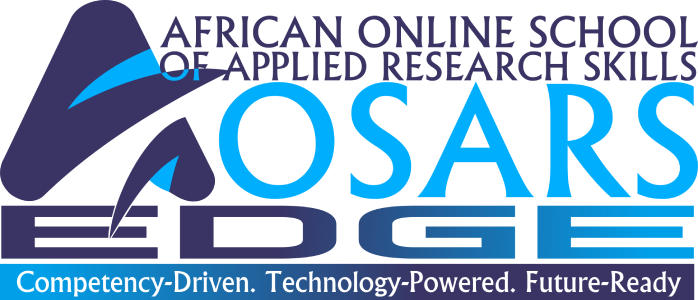MASTERS’ STUDENTS TRAINED ON THE DEVELOPMENT OF CHAPTER ONE OF A THESIS

MASTERS’ STUDENTS TRAINED ON THE DEVELOPMENT OF CHAPTER ONE OF A THESIS
A recent training session was held by the African Online School of Applied Research Skills (AOSARS) on May 15th, 2025, during which valuable insights were offered to Master’s students on thesis writing methodologies. The session specifically focused on structuring the first chapter while ethical incorporation of modern tools to enhance the research process was discussed.
Researchers often face the challenge of the blank page when beginning a thesis. During the AOSARS workshop, this challenge was addressed through the presentation of a methodical approach by which the seemingly insurmountable task could be broken down into manageable components.
A “top-down” approach to structuring the background section was emphasized during the training. It was recommended that researchers begin with the most specific element of their topic and work methodically toward their research focus. This approach involves establishing broader context, creating transitions between concepts, narrowing to the specific domain, and contextualizing geographically from global to local perspectives.
The importance of unpacking key terminology in research topics was highlighted during the AOSARS session. It was demonstrated that deliberate examination of terms in the title can enhance the background section by establishing conceptual clarity and strengthening the theoretical foundation. It was emphasized that a strong background should culminate in clearly identified research gaps, demonstrating the uniqueness of the study within existing knowledge.
Building on this foundation, it was explained that the statement of the problem should articulate the specific impact of the broader context, the significance of the target population, the need for the research approach, and the gaps being addressed.
A key focus of the workshop was AI’s role in thesis writing. A crucial distinction was made: AI should be used as a visualization tool for structuring content and identifying keywords—not for generating text to be incorporated into the thesis. This approach helps researchers visualize content flow and identify areas needing development.
However, a firm caution was given against copying AI-generated content, with emphasis placed on the need for original work and warnings provided about university policies that consider AI-generated content as plagiarism.
During the AOSARS training session, several key topics essential to successful thesis development were covered for Master’s students:
- Structured approach to Chapter One development
- Background section organization using the top-down method
- Strategic identification of research gaps
- Formulation of concise problem statements
- Ethical integration of AI as a visualization tool
- Literature review preparation techniques
It was conveyed to Master’s students that organization is half the battle in thesis writing. By methodically structuring content and using appropriate tools to visualize structure, solid foundations for scholarly contributions can be created while academic integrity is maintained.




